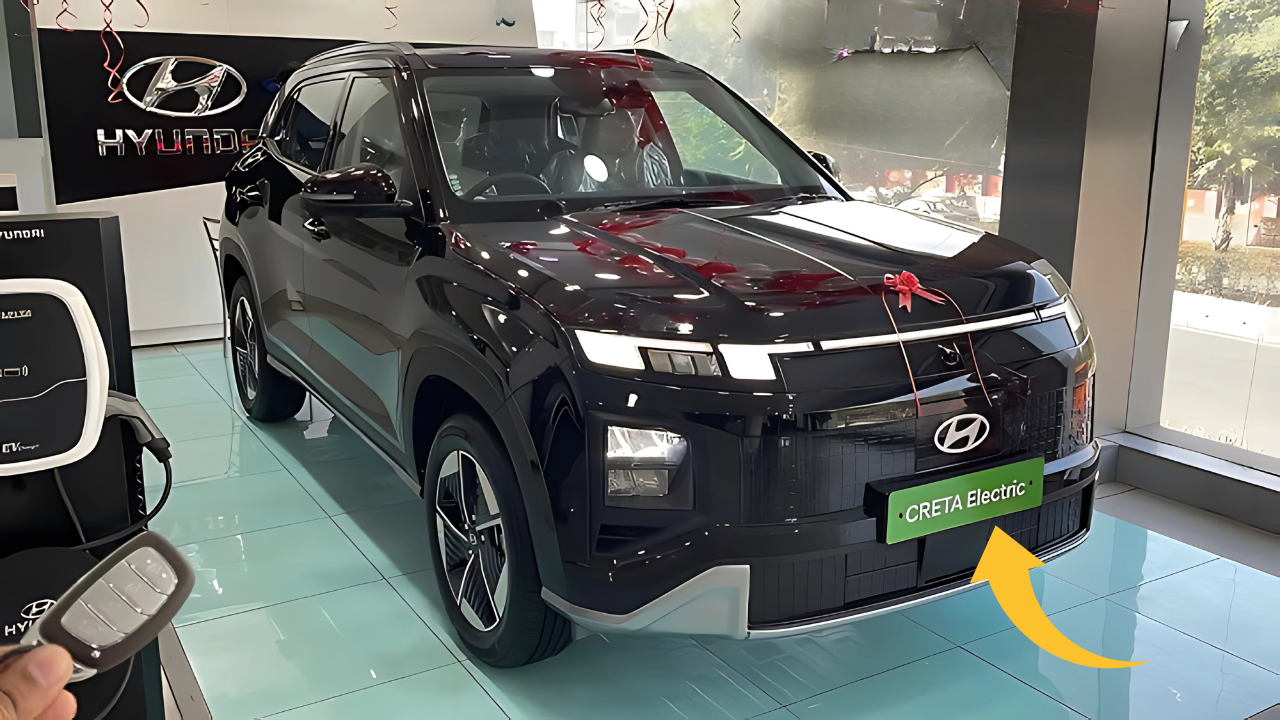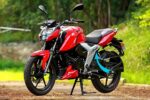Hyundai Creta EV: Hyundai’s path to the Creta EV reflects a distinctly Korean approach to market development—methodical, research-driven, and strategically patient.
Unlike some competitors who rushed early electric offerings to establish technological credentials, Hyundai India deliberately calibrated its electric timeline to align with market readiness and infrastructure development.
The company’s Indian electrification journey began with the premium Kona Electric in 2019—a limited-volume offering that served more as a technological demonstration than a mainstream proposition.
This was followed by careful observation of market developments, particularly the reception of Tata’s more accessibly priced Nexon EV and MG’s ZS EV.
Rather than immediately countering these early movers, Hyundai invested this period in developing an India-specific electric strategy informed by actual market data rather than speculative projections.
This measured approach culminates in the Creta EV—a product that leverages the established brand equity of Hyundai’s most successful Indian nameplate while incorporating lessons from both global electric vehicle developments and specific Indian market requirements.
The strategy prioritizes familiarity and accessibility over technological novelty, recognizing that mainstream Indian electric adoption will be driven by practical considerations rather than early-adopter enthusiasm.
Hyundai Creta EV : Design Philosophy- Evolutionary Electrification
The Creta EV’s exterior design strategy balances visual distinctiveness against the equity of the existing Creta aesthetic.
From a distance, the familiar silhouette remains immediately recognizable—a deliberate choice that maintains connection with the nameplate’s established customer base rather than alienating potential buyers with radical styling departures.
Closer inspection reveals thoughtful adaptations to electric architecture. The front fascia features a blanked-off interpretation of Hyundai’s parametric grille design, with illuminated elements that create a distinctive light signature.
Aerodynamic considerations inform subtle modifications throughout, including redesigned front bumper air curtains, smoother underbody paneling, and active air flaps that reduce drag when battery thermal management permits.
Wheel designs specific to the electric variant offer both visual distinction and aerodynamic optimization, with 17-inch aero-efficient alloys standard across the range.
These wheels wear low-rolling-resistance tires developed specifically for electric application, balancing efficiency with the grip expectations of SUV buyers.
The vehicle’s dimensions remain largely consistent with its internal combustion counterpart—a packaging achievement that speaks to the flexibility of Hyundai’s K2 platform.
Length extends marginally to 4,330mm (+15mm) while height increases slightly to 1,645mm (+10mm), differences barely perceptible but creating additional interior space through the dedicated electric architecture.
Color options include EV-specific choices like Gravity Gold Matte and Stormy Blue Pearl alongside the standard Creta palette, allowing buyers to either highlight or downplay the vehicle’s electric nature according to personal preference.
Interior Experience: Familiar Revolution
Step inside the Creta EV, and the philosophy of accessible innovation continues.
The fundamental architecture maintains the ergonomic excellence and space efficiency that contributed to the conventional Creta’s success, while introducing electric-specific elements that enhance functionality and reinforce the vehicle’s technological credentials.
The dashboard evolves the current Creta’s horizontal layout with a more minimalist approach appropriate for electric propulsion.
Physical controls remain for critical functions—an acknowledgment of Indian consumer preferences for tactile interaction over complete touch dependency.
However, these controls are redesigned with a more refined execution featuring brushed metal finishes and improved haptic feedback.
The centerpiece of the interior is a dual-screen setup comprising a 10.25-inch digital instrument cluster and a 10.25-inch infotainment touchscreen, visually connected through continuous glass that creates the impression of a single panoramic display.
This arrangement, previously reserved for Hyundai’s premium models, elevates the perceived technological sophistication while providing the expanded information display capabilities necessary for effective EV operation.
Materials selection demonstrates careful consideration of both sustainability and Indian market expectations.
Recycled materials feature prominently, including fabrics derived from reclaimed ocean plastic and natural fiber composites for non-structural interior components.
However, these sustainable elements are integrated within a premium-feeling cabin rather than highlighted through visual distinction that might alienate conservative buyers.
Seating comfort benefits from the electric architecture’s flat floor, which allows a more natural seating position for center rear passengers.
The absence of transmission tunnel intrusion also permits a larger center console with expanded storage options, including a deep bin specifically sized for charging cables and adapters.
Climate control receives particular attention given its impact on electric range.
The multi-zone automatic system incorporates a heat pump rather than conventional resistive heating, significantly reducing energy consumption in cool weather.
Seat ventilation—a valued feature in India’s climate—operates through a more efficient system that maintains comfort while drawing less battery power than conventional implementations.
The panoramic sunroof, a significant selling point for the conventional Creta, remains available but gains electrochromic glass that can be adjusted from transparent to opaque electronically—reducing solar heat gain without requiring a physical shade that adds weight and complexity.
Powertrain: Right-Sized Electrification
The Creta EV’s technical specifications reflect Hyundai’s nuanced understanding of the Indian market’s particular requirements.
Rather than simply transplanting electric powertrains from global models, the company has developed a configuration specifically calibrated for Indian priorities and usage patterns.
The standard powertrain employs a front-mounted electric motor producing 138 horsepower (103 kW) and 255 Nm of instantaneous torque—figures that position the Creta EV between mass-market electric offerings like the Tata Nexon EV and premium alternatives like the MG ZS EV.
This calibration delivers a 0-100 km/h acceleration time of approximately 9.6 seconds, providing the responsive urban driving experience electric vehicles excel at while avoiding unnecessary performance that would compromise efficiency or affordability.
A higher-output variant offering 168 horsepower (125 kW) and 285 Nm targets more performance-oriented buyers, reducing the 0-100 km/h time to approximately 8.5 seconds.
Both variants are electronically limited to 155 km/h—a practical ceiling for Indian driving conditions that optimizes efficiency without compromising highway capability.
The battery system employs lithium-ion nickel-manganese-cobalt (NMC) chemistry, balancing energy density, thermal stability, and cost considerations.
The standard configuration offers 48 kWh capacity, delivering a claimed ARAI-certified range of 450 kilometers (translating to approximately 350-380 kilometers in typical real-world usage).
A larger 58 kWh option extends this to a claimed 510 kilometers, addressing range anxiety concerns for buyers contemplating occasional intercity travel.
Charging capabilities include 11 kW AC compatibility for overnight home charging and support for DC fast charging at up to 120 kW, allowing 10-80% replenishment in approximately 35 minutes under optimal conditions.
Notably, Hyundai has designed the battery cooling system specifically for Indian climate conditions, with enhanced thermal management to maintain performance and longevity in high-temperature environments.
Technology Integration: Purposeful Innovation
The Creta EV’s technology package demonstrates careful focus on features that meaningfully enhance the electric ownership experience rather than merely adding specification-sheet appeal.
The proprietary bluelink connected car system expands its functionality with EV-specific features including remote climate pre-conditioning, charging status monitoring, and route planning that incorporates charging station availability.
The infotainment system integrates detailed energy consumption analysis, helping drivers understand the relationship between driving style, climate control usage, and range.
These insights are presented through intuitive visualization rather than overwhelming data displays, making the electric transition more accessible for first-time EV buyers.
Driver assistance features focus on those most relevant to Indian driving conditions, including adaptive cruise control that functions in stop-and-go traffic, lane keeping assistance that accommodates India’s sometimes ambiguous lane markings, and a blind-spot view monitor that displays camera feeds of adjacent lanes when indicators are
activated—particularly valuable given the inconsistent mirror usage among two-wheeler riders in urban environments.
Unique to the electric variant is a vehicle-to-load (V2L) function that enables the battery to power external devices or even charge another electric vehicle in emergency situations.
This feature, while unlikely to see daily use, addresses practical concerns about electricity reliability in some regions and demonstrates the expanded functionality electric architecture enables.
Market Positioning and Ownership Experience
The Creta EV enters a market where electric adoption continues to accelerate but remains concentrated primarily in metropolitan areas with developed charging infrastructure.
Hyundai’s pricing strategy positions the vehicle as a premium but accessible offering, with an expected range from approximately ₹20 lakh for the base variant to ₹25 lakh for fully-equipped extended-range models (ex-showroom).
This positioning places the Creta EV above mass-market electric offerings but significantly below luxury electric alternatives—a calculated middle path that leverages the Creta’s established brand credentials while acknowledging the price sensitivity that remains a defining characteristic of the Indian market.
The ownership proposition extends beyond the vehicle itself to encompass Hyundai’s developing electric ecosystem.
Buyers receive a complimentary 7.2 kW AC home charger with installation, removing a significant adoption barrier.
The service network has undergone comprehensive training and equipment upgrades, with dedicated EV bays now present in over 300 dealerships nationwide.
Warranty coverage demonstrates confidence in the technology: 8 years/160,000 kilometers for the battery pack and 5 years/unlimited kilometers for the vehicle, with an assured battery buyback program offering guaranteed residual value at the end of the warranty period.
This comprehensive coverage addresses one of the primary concerns for potential electric adopters—uncertainty about long-term reliability and residual value.
Hyundai Creta EV: Pragmatic Electrification for the Mainstream
The Hyundai Creta EV represents neither revolutionary technological moonshot nor timid compliance exercise, but rather carefully calibrated electrification of an established success formula.
By maintaining the fundamental attributes that made the conventional Creta successful—interior space, feature richness, brand reputation—while thoughtfully integrating electric propulsion, Hyundai has created a product positioned to accelerate mainstream EV adoption beyond early enthusiasts.
The vehicle’s significance extends beyond its individual sales potential to its role in normalizing electric propulsion in India’s volume segments.
By applying the Creta nameplate to an electric variant, Hyundai positions electrification not as exotic technology but as a natural evolution of established mobility solutions—a psychological framing that may prove more effective in overcoming adoption hesitancy than more radical approaches.
For India’s automotive landscape, the Creta EV’s arrival signals a transition point where electric vehicles begin to compete with internal combustion alternatives on their fundamental merits rather than novelty or early-adopter appeal.
The coming years will determine whether this measured approach accelerates India’s electric transition or whether more disruptive strategies ultimately prove more successful in transforming the world’s fourth-largest automotive market.



